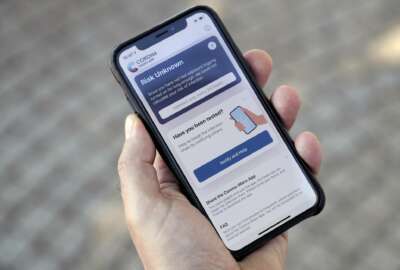Army to expand BYOD pilot after successful National Guard testing
The Army is expanding a “bring-your-own-device” policy in 2022 after seeing “tremendous operational benefit” as part of a pilot program this past fall.
For once, it’s the National Guard and Reserves who get first pick on the Army technology front.
The Army is expanding a “bring-your-own-device” policy in 2022 after seeing “tremendous operational benefit” as part of a pilot program this past fall, according to Lt. Gen. John Morrison, the Army’s deputy chief of staff, G-6.
“In all candor, we also see some fiscal opportunity as well,” Morrison said during a Tuesday call with reporters. “And so we want to explore that and we will do an expanded pilot as we head into the spring.”
The fall pilot was led by the National Guard and featured security testing, according to Raj Iyer, the Army’s chief information officer.
“The technology that we implemented not only met the requirements from a functional perspective, but went through extensive cybersecurity red teaming and testing from both [the Director of Operational Test and Evaluation] as well as the Army’s threat systems management office, and came back with flying colors,” Iyer said.
The Army will continue the expansion of the policy with the National Guard and reserves, where Iyer said it’s needed most. But the service will look to see how specific missions can benefit from the policy as well.
“This is an area where the Army is going to prioritize the reserve or National Guard components over active for bring your own device, but then also extend it across other commands, so we can get a good flavor for how well this will work to support other areas such as our training mission, our logistics mission across the Army,” Iyer said.
The service is looking at how the pilot fares for users both in the continental United States and abroad, with lessons learned informing a “broader implementation across the Army,” Iyer added.
The Guard’s piloting of bring-your-own device came in a year when the reserve force had its largest mobilization since World War II, noted Kenneth McNeill, chief information officer for the National Guard.
“A lot of the soldiers that were mobilized, it is very helpful to have a capability on their personal devices, when they are deployed from their full time jobs in a traditional role,” McNeill said.
Officials didn’t say how many soldiers would be able to take advantage of the pilot next year, but Morrison said the Army will be “significantly expanding from where we were in the fall.”
Not surprisingly, the pandemic shifted expectations from Army users for how they should be able to access email and other work. DoD’s temporary Commercial Virtual Remote environment, which was shut down earlier this year, allowed soldiers to do some work from their own devices. Meanwhile, the Air Force began implementing a “Bring Your Own Approved Device” approach early in 2020.
“Even while the CVR environment was up and running for some time earlier this year and last year, it was clear that the ability for users to bring their own approved devices, and enabling access to email and other collaboration tools, is something that we should support on an enduring basis,” Iyer said.
In lieu of CVR, the Army is now migrating to Army365, the service’s instantiation of DoD365. The platform provides Microsoft 365 tools with added security features beyond typical commercial instantiations.
Morrison said more than 50% of the Army has transitioned from legacy Defense Enterprise Email to Army 365, with 60% in reach by the end of the calendar year.
The Army has been hit with some criticism for its decision to only plan for about 1.2 million Army365 licenses to save money, even though there are 1.4 million users across the service. Defense Enterprise Email is slated for decommissioning in March, but Iyer said the Army “will have a solution to transition everybody and their current email capabilities to either Army365 or an alternate solution.”
He declined to discuss details of the alternate solution, “because at this point it’s all contract and acquisition sensitive, and we want to make sure that we are staying clean and are following the acquisition procedures.”
Copyright © 2025 Federal News Network. All rights reserved. This website is not intended for users located within the European Economic Area.
Follow @jdoubledayWFED






